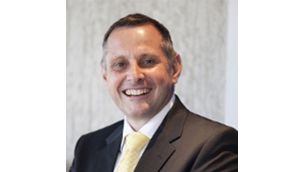Healthcare performance Improvement
addresses growing patient volumes
Collaborating to reduce examination delays and enhance patient throughput
At a large, academic hospital network, patient volume had been steady with a slight year-on-year increase and market research had indicated continued growth for their patient community. Although their MR Services included several scanners and they had implemented operational improvements, additional performance improvements were needed. The client was looking to further streamline workflow processes and evaluate technology upgrade options in order to reduce examination delays and increase patient throughput, while continuing to support the delivery of exceptional patient care.
Our approach
A phased approach was recommended - focusing on operational workflow, technology utilization, and market demographics. A Philips-client project team was agreed to ensure collaboration and trust.
Patient and system data was collected and analyzed and stakeholder input was gathered from clinicians, staff, patients, and family. The patient journey and clinical workflow was documented from check-in to exam completion, along with the following project deliverables:
MR technology enablement
The client also asked Philips to provide a data-based evaluation of the potential technology enablement options such as upgrading the current analog MR units to a digital platform and/or removing the mobile unit. They were looking to better understand the related workflow impact to these potential changes. Comprehensive return on investment (ROI) and net present value analyses were performed including a ROI analysis for each individual MR system with a detailed list of assumptions and variables of the 3 stationary MR units. The data from these analyses supported the earlier recommendation to upgrade the three stationary MR systems from an analog platform to a digital platform. A prioritized timeframe recommendation was included, demonstrating the expected increased ROI.
Identifying the key drivers of utilization and workflow
As part of the data analysis, schedule gap and scheduled time to arrival time analyses were conducted to review the current capacity of the MRI units and scheduling capacities respectively. The MRI department outpatient flow was observed and charted, including 11 steps which could be the cause of potential time delays.
Results
The project team agreed change recommendations, prioritized the initiatives, and developed a high-level implementation plan. As other changs are implemented, they will be measured and tracked to document progress.
The client team has implemented several change recommendations and achieved strong results:

Related capabilities
Learn more about our healthcare consulting services for your organization
Customer stories in Healthcare management
Innovation Matters blog
News
*Results from case studies are not predictive of results in other cases. Results in other cases may vary










